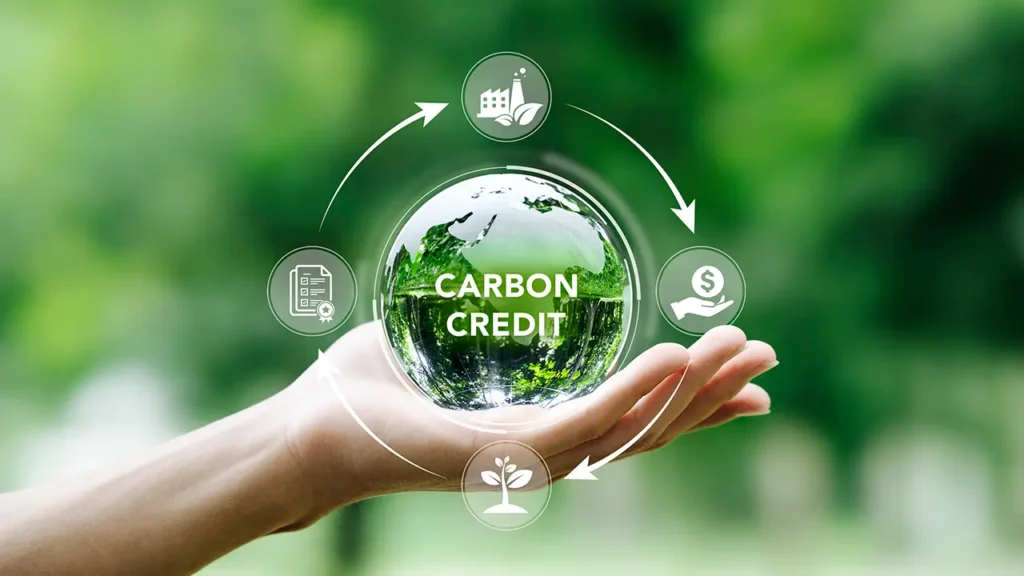Compliance vs. Voluntary Carbon Markets: What Really Matters in 2025

Solaxy Group – Carbon markets are often described as the invisible backbone of climate action. But not all carbon markets are created equal. In 2025, the world is running on two very different systems: compliance carbon markets—government-regulated systems that make pollution a legal liability—and the voluntary carbon market, where companies and individuals buy credits by choice.
At first glance, they appear similar. Both involve carbon allowances or credits, both put a price on greenhouse gases, and both aim to accelerate the transition to a low-carbon economy. Yet the differences are fundamental, and knowing which market you’re operating in can make or break a climate strategy.
Compliance markets: law-backed and binding
The compliance carbon market is built into law. Governments establish either a carbon tax or a cap-and-trade scheme that sets a hard limit on emissions. Polluters must either reduce their emissions or pay for allowances that give them the right to emit.
The European Union’s Emissions Trading System (EU ETS) remains the flagship example. Since its launch in 2005, the EU ETS has cut emissions from power and industry by nearly 50% compared to 2005 levels, and it continues to tighten its annual cap to meet the bloc’s 2030 climate goals. European Commission: EU ETS
Other regions have followed:
- China launched its national ETS in 2021, now covering around 4.5 billion tonnes of CO₂ annually, or 40% of the country’s emissions.
- The UK Emissions Trading Scheme replaced EU participation post-Brexit, setting its own national cap.
- Several U.S. states—including California and Washington—operate regional cap-and-trade systems, while federal discussions on carbon pricing continue.
In compliance markets, allowances are treated as regulated commodities. They can be traded on exchanges such as ICE and EEX, with spot, futures, and forward contracts subject to strict financial rules. The market is transparent, liquid, and enforceable: emitters that fail to comply face fines or legal penalties.
Voluntary markets: optional, fragmented, evolving
The voluntary carbon market (VCM) is an entirely different landscape. Here, buyers—corporations, institutions, or individuals—purchase credits from projects that reduce or remove greenhouse gases. Each credit typically represents one tonne of CO₂ avoided or removed.
Examples include:
- Replacing wood-burning cookstoves with solar or efficient stoves.
- Conserving rainforests or mangroves that absorb carbon naturally.
- Investing in direct air capture technology to pull CO₂ out of the sky.
Unlike compliance systems, voluntary markets are not legally binding. Oversight comes from registries such as Verra, Gold Standard, American Carbon Registry, and the Climate Action Reserve. These bodies issue credits, track retirements, and apply methodologies to measure impact.
Yet credibility has been a persistent challenge. Independent trackers reported that in 2024, voluntary market retirements fell, and prices stagnated at low levels—averaging just above $3 per credit across the top 500 projects. Ecosystem Marketplace report
To address this, the Integrity Council for the Voluntary Carbon Market (ICVCM) has introduced its Core Carbon Principles (CCP). Starting in 2024, only credits meeting strict integrity criteria can carry the CCP label, offering buyers a clearer signal of quality. ICVCM: CCP
Why compliance delivers harder results
The reason compliance markets are more effective at cutting emissions comes down to three factors:
- Legal enforcement. Polluters have no choice but to comply.
- Scale. Compliance systems regulate entire sectors of economies, not just willing participants.
- Transparency. Allowance supply is capped, auctions are public, and registries are audited.
The numbers tell the story: in 2022, the EU ETS alone accounted for €751 billion in trading volume, representing nearly 90% of all compliance market activity worldwide. EU ETS trading data
Where voluntary credits still matter
Dismissing the voluntary market outright would be a mistake. While compliance schemes handle the heavy lifting, voluntary credits serve crucial roles:
- Financing innovation. They support emerging technologies and nature-based solutions not yet covered by compliance markets.
- Covering hard-to-abate sectors. Aviation, shipping, and agriculture often rely on VCM credits for near-term climate claims.
- Piloting compliance-grade projects. Some voluntary projects may evolve into compliance supply as rules converge—especially under the UN’s CORSIA aviation scheme, which already recognizes certain crediting programs. ICAO: CORSIA
The challenge for buyers is quality. Companies must now prioritize credits that are CCP-labeled or CORSIA-eligible, document how offsets fit into their broader decarbonization plan, and avoid low-price, low-integrity credits that risk reputational damage.
Investor lens: divergence and convergence
From an investor’s perspective, compliance and voluntary markets are diverging—but may also be on a slow collision course.
- Compliance markets are expanding in coverage, from Europe to Asia and regional U.S. systems. They’re increasingly treated like commodities markets, with robust pricing, futures contracts, and clear regulatory backing.
- Voluntary markets are consolidating. Low-quality supply is being squeezed out, while new standards—ICVCM’s CCP label, aviation’s CORSIA rules—are pushing projects toward compliance-like rigor.
Over the next decade, analysts expect that what counts as a “high-integrity” voluntary credit will look more and more like a compliance allowance in terms of verification, permanence, and transparency.
The takeaway for 2025
- If you’re a regulated emitter in the EU, UK, China, or U.S. states with cap-and-trade systems, compliance obligations come first. Get your allowance strategy in order.
- If you’re buying offsets to meet a net-zero target, use voluntary credits only for residual emissions after internal cuts.
- Always demand CCP-labeled or CORSIA-eligible credits—and be prepared to defend your choices publicly.
Carbon markets are not silver bullets. But they are powerful levers—one binding and standardized, the other flexible and experimental. Together, they form a dual system that, if governed with integrity, can accelerate the race to net zero.
